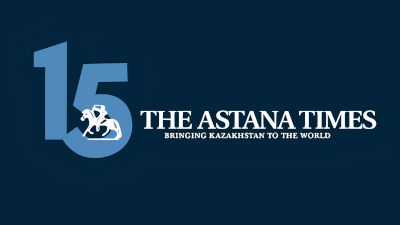ASTANA—Kazakhstan’s energy sector is embarking on a major modernization initiative by 2029. According to an analytical piece by Kazinform, the initiative will address aging infrastructure, tariff policies and rising demand, focusing on sustainability and equitable solutions.

Sergey Agafonov, the chairman of the Kazakhstan Association of Energy Supply Organizations. Photo credit: time.kz
At the end of 2024, the Kazakh government launched a national project to modernize the energy and utility sectors and address long-standing issues, including decaying infrastructure, rising energy demands and tariff imbalances.
The initiative is a significant milestone in Kazakhstan’s energy strategy, with an estimated investment of 13.5 trillion tenge (US$25.5 billion), including 6.2 trillion tenge (US$11.7 billion) for energy sector modernization, 6.8 trillion tenge (US$12.8 billion) for utilities, and 602 billion tenge (US$1.12 billion) for automation. Funding will come from domestic banks, national development institutions and international organizations.
“The volume of networks slated for modernization spans 80,000 kilometers—equivalent to two equators,” said Sergey Agafonov, the chairman of the Kazakhstan Association of Energy Supply Organizations, highlighting the project’s scale.
Over the next five years, the country will undergo extensive repairs, modernizing at least 200 natural monopoly entities and 30 thermal power plants to improve efficiency and reduce asset depreciation from 65% to 40%.
Aging infrastructure and electricity losses
Kazakhstan’s energy infrastructure has deteriorated, with over a third of power plants showing 70–90% wear and tear. This includes critical facilities such as combined heat and power (CHP) and state district power plants (GTPP), which have struggled to maintain consistent supply.

Zhakyp Khairushev. Photo credit: orda.kz
Failures in regional electric grid companies further deepened the problem. Some grids report up to 97% deterioration, leading to increased accidents. Technological violations rose from 18,609 cases in 2022 to over 28,000 in 2023 and decreased to 18,263 violations in eight months of 2024.
As a result, the deterioration of infrastructure not only reduces the quality of services but also burdens citizens financially by increasing technological electricity losses. This, in turn, impacts tariffs, highlighting the pressing need for intervention.
“In cities of national importance, losses do not exceed 9%, which is considered normal. The higher the voltage, the lower the losses,” said Zhakyp Khairushev, the managing director of the Atameken National Chamber of Entrepreneurs and an honored power engineer of Kazakhstan.
However, he noted that the situation in regional networks differs significantly.
“I worked in Oral, where losses reached 18%, meaning every fifth kilowatt was simply lost. The situation is improving, including in Oral, where losses in 2023 dropped to 13.43%. However, there are still examples across the country where losses rise as high as 17.44%. In most developed economies, a loss rate of 10–12% is considered the maximum acceptable,” said Khairushev.
Addressing reactive power issues and modernizing substations will be key steps in reducing losses in distribution networks and improving the energy system’s overall efficiency.
Tariff challenges: Striking a balance
According to Agafonov, tariff policies remain controversial. The current system places a disproportionate burden on small businesses and makes little distinction between high-energy consumers and those with minimal needs.
“Today’s tariffs do not reflect real consumption patterns. For example, those heating private pools and pensioners pay the same rate, while businesses bear the excess cost. So, those who consume beyond the established social norm should pay higher rates, while those staying within the norm should benefit from minimal tariffs,” said Agafonov, noting that tariff formation should be based on a progressive ‘luxury tax’ model to ensure fairness while promoting sustainability.
The national project aims to phase out cross-subsidizing tariffs and gradually shift to market-based pricing that reflects actual consumption and reduces financial strain on businesses and vulnerable populations.
Modernizing for new realities
Energy companies face challenges that were not priorities a decade ago, such as the rapid rise in electric vehicles. According to the Bureau of National Statistics (BNS), the number of electric passenger cars increased 1.6 times in the first 11 months of 2024, increasing from 7,383 to 12,119 vehicles. This is a global trend.
The national project emphasizes the need to adapt the energy system to these new realities. One recommendation is to transition consumers in new residential areas to a higher voltage of 10 kilovolts to manage the growing load, including from electric vehicles. This is especially critical in big cities, including Almaty and Astana, where electric cars are most popular.
Addressing energy inefficiency
It is necessary to address Kazakhstan’s energy deficiency and intensity of the economy, which in 2022 was 3.2 times higher than that of Organisation for Economic Co-operation and Development (OECD) nations and nearly double the global average. Poor energy efficiency across public and residential sectors compounds the issue, with only 14% of buildings meeting high-efficiency standards.
Promoting energy conservation and introducing a balanced electricity market are essential to align Kazakhstan’s energy consumption with global benchmarks. Additionally, integrating renewable energy sources is vital.
Financial and social implications
The project’s financial backbone relies on state funds, private investments and international loans. However, challenges remain in attracting investment and addressing workforce shortages in thermal power engineering.
To mitigate social impacts, the government plans to cap utility costs for low-income households at 5% of their total income. Simplified housing assistance rules aim to ease the transition to market-based tariffs while safeguarding vulnerable groups.


